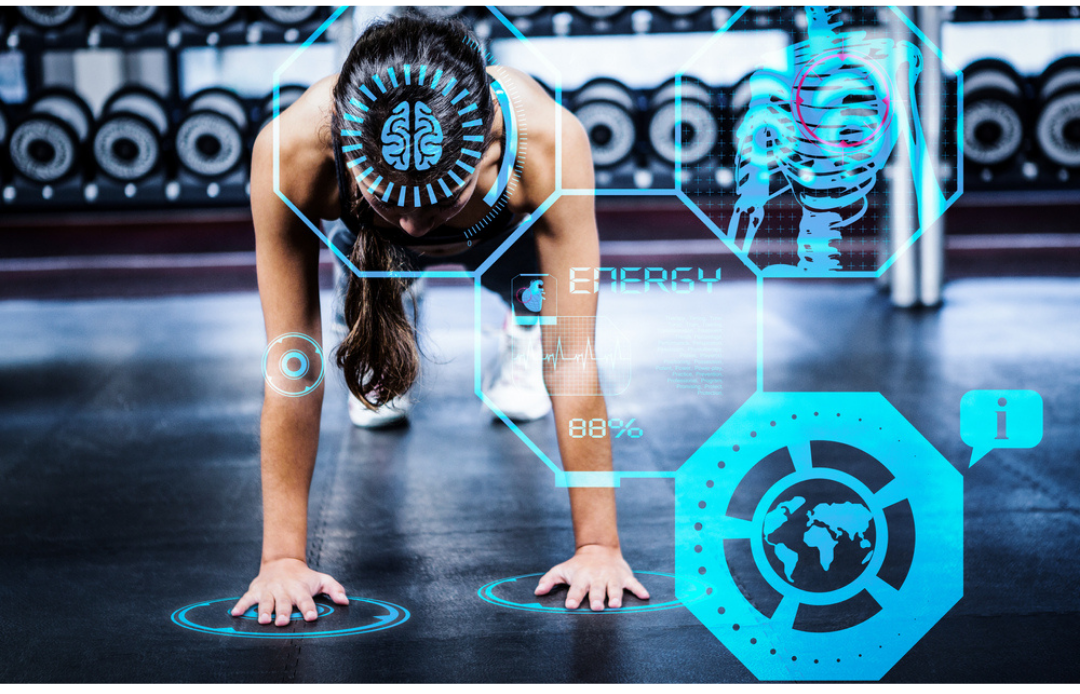Top Fitness Gadgets 2025 introduces cutting-edge advancements reshaping the landscape of health and wellness, offering a glimpse into a future driven by innovation and technology. From wearable fitness trackers to AI-powered personalized fitness apps, the evolution of these gadgets is set to revolutionize how we approach fitness goals and overall well-being.
Fitness gadgets in 2025 are revolutionizing the way people approach health and wellness. These innovative devices are designed to help individuals track, monitor, and improve their physical fitness levels, making it easier to achieve their health goals.
According to a recent study on the future of productivity tools, it is predicted that by 2025, the market will be dominated by innovative Smart Productivity Apps. These apps are designed to streamline workflows, improve time management, and enhance collaboration among team members.
Key Trends Driving the Development
The development of fitness gadgets in 2025 is being primarily driven by the following key trends:
- Integration of Artificial Intelligence (AI): Fitness gadgets are incorporating AI capabilities to provide personalized workout plans, nutrition recommendations, and real-time feedback.
- Health Monitoring Features: The focus on health monitoring features such as heart rate tracking, sleep analysis, stress management, and blood oxygen saturation levels is becoming more prominent in fitness gadgets.
- Smart Clothing and Wearables: The rise of smart clothing embedded with sensors and wearables that seamlessly integrate with fitness apps for a comprehensive tracking experience.
- Virtual Reality (VR) Fitness: The integration of VR technology in fitness gadgets to offer immersive workout experiences and gamification to keep users motivated and engaged.
Importance of Technology in the Evolution
Technology plays a crucial role in the evolution of fitness gadgets by enabling advanced features and functionalities that enhance the overall user experience. The importance of technology in fitness gadgets lies in:
- Enhanced Data Accuracy: Technology allows for precise tracking of fitness metrics such as steps taken, calories burned, and workout intensity, providing users with accurate feedback on their progress.
- Personalization and Customization: Advanced algorithms and machine learning algorithms enable fitness gadgets to offer personalized recommendations and tailor workout plans according to individual goals and preferences.
- Accessibility and Convenience: Technology makes fitness gadgets more accessible and user-friendly, allowing individuals to easily integrate them into their daily routines for seamless monitoring of their health and fitness levels.
Wearable Fitness Trackers
Wearable fitness trackers play a crucial role in monitoring an individual’s health and fitness by collecting data on various activities such as steps taken, heart rate, sleep patterns, and calories burned. These devices provide users with valuable insights into their overall well-being, helping them make informed decisions to improve their lifestyle.
Types of Wearable Fitness Trackers in 2025
In 2025, there are several types of wearable fitness trackers available on the market, each with its unique features and functionalities. Some of the most common types include:
- Smartwatches: These devices not only track fitness metrics but also offer additional features like notifications, music playback, and smartphone integration.
- Fitness Bands: These are slim, lightweight bands that focus primarily on tracking fitness metrics such as steps, distance, and calories burned.
- Smart Clothing: This innovative category includes garments embedded with sensors that monitor biometric data like heart rate, breathing rate, and even posture.
- Smart Glasses: These wearable devices provide real-time feedback on fitness metrics while also offering a heads-up display for navigation and notifications.
Advanced Features in Wearable Fitness Trackers
In 2025, wearable fitness trackers have integrated advanced features like artificial intelligence (AI) and biometric sensors to enhance their capabilities. AI algorithms analyze the collected data to provide personalized recommendations for workouts, nutrition, and sleep patterns. Biometric sensors, such as ECG sensors and blood oxygen monitors, offer more accurate health insights to users, enabling them to track their progress more effectively and make adjustments to their fitness routines.
Smart Home Gym Equipment

Smart home gym equipment is expected to undergo significant advancements by 2025, revolutionizing the way people exercise at home. These innovations aim to provide users with a more interactive and engaging workout experience, ultimately enhancing motivation and adherence to fitness routines.
Advancements in Smart Home Gym Equipment
In 2025, smart home gym equipment is projected to integrate cutting-edge technologies such as artificial intelligence (AI) and augmented reality (AR) to offer personalized workout routines tailored to individual fitness levels and goals. These devices will also feature enhanced connectivity, allowing users to track their progress in real-time and receive instant feedback on their performance.
Examples of Smart Home Gym Equipment with VR Technology
One example of smart home gym equipment incorporating virtual reality (VR) technology is a VR treadmill that simulates outdoor running environments, providing users with a more immersive workout experience. Another example is VR-enabled resistance training equipment that guides users through interactive workout sessions while monitoring their form and technique.
Enhancing User Experience and Motivation
Smart home gym equipment enhances user experience by offering engaging and interactive workout routines that keep users motivated and excited to exercise. By providing personalized feedback and progress tracking, these devices empower individuals to take control of their fitness journey and achieve their goals more effectively. The integration of VR technology also adds an element of fun and excitement to workouts, making them more enjoyable and sustainable in the long run.
AI-Powered Personalized Fitness Apps
In 2025, AI-powered personalized fitness apps are revolutionizing the way individuals approach their health and wellness goals. These apps leverage artificial intelligence algorithms to tailor workout plans and nutrition recommendations for users based on their unique needs and preferences.
Impact of AI on Personalized Fitness Apps
AI has enabled fitness apps to analyze vast amounts of data collected from users, such as their biometric information, exercise habits, dietary preferences, and fitness goals. With this data, AI algorithms can create personalized workout routines and meal plans that are specifically designed to help individuals achieve their desired outcomes efficiently.
- AI algorithms can track users’ progress in real-time and adjust their plans accordingly to optimize results.
- These apps can provide personalized recommendations for exercises, rest periods, and nutrition intake based on individual responses and feedback.
- AI-powered fitness apps can offer motivation and support through personalized messages, reminders, and goal-setting features.
Benefits and Challenges of AI in Fitness Guidance
Using AI for personalized fitness guidance offers numerous benefits, including increased efficiency, tailored recommendations, and improved user engagement. However, there are also challenges associated with relying solely on AI for fitness advice.
- Benefits:
- Personalized approach leads to better results and user satisfaction.
- Efficient tracking and adjustment of workout plans for optimal performance.
- Enhanced motivation and engagement through personalized coaching features.
- Challenges:
- Potential privacy concerns related to the collection and use of personal data.
- Risk of overreliance on technology, leading to reduced human interaction and accountability.
- Accuracy and reliability of AI algorithms in providing sound fitness advice.
Health Monitoring Devices
Health monitoring devices have become an integral part of fitness gadgets in 2025, providing users with real-time data on their vital signs, sleep patterns, and overall health metrics. These devices play a crucial role in helping individuals better understand their health and make informed decisions to improve their well-being.
Latest Health Monitoring Devices
- The latest fitness gadgets are equipped with advanced heart rate monitors that track your heart rate continuously throughout the day, providing insights into your cardiovascular health.
- Sleep trackers integrated into these devices analyze your sleep patterns, including duration, quality, and stages of sleep, to help you optimize your rest and recovery.
- Blood oxygen monitors measure the oxygen saturation levels in your blood, which is essential for monitoring respiratory health and detecting potential issues.
- Some fitness gadgets now come with stress trackers that monitor your stress levels and provide relaxation techniques to help manage stress effectively.
Implications of Using Health Monitoring Devices for Preventive Healthcare
Health monitoring devices offer significant implications for preventive healthcare by empowering individuals to take proactive steps towards improving their overall health and well-being. By tracking vital signs, sleep patterns, and other health metrics on a regular basis, users can detect early warning signs of potential health issues and take necessary actions to prevent them. This proactive approach can lead to better health outcomes, reduced healthcare costs, and an overall improvement in quality of life.
In conclusion, Top Fitness Gadgets 2025 are poised to redefine the way we engage with fitness and health, ushering in an era of personalized, tech-driven wellness solutions that cater to individual needs and preferences.







